


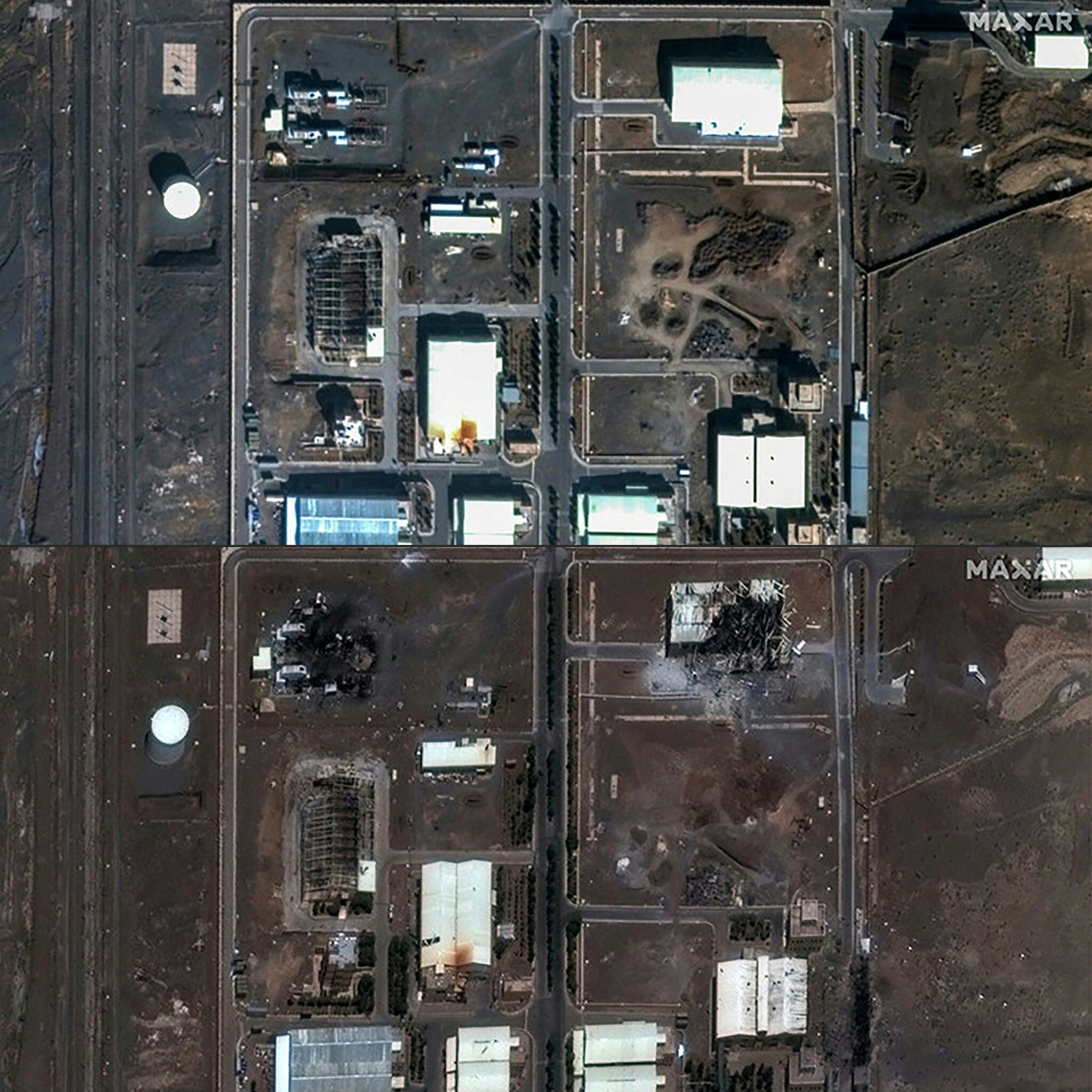
US forces have attacked three Iranian nuclear and military sites, further upping the stakes in the Israel-Iran war.
US President Donald Trump said the strikes, which he described as “very successful,� had hit the Natanz, Fordo and Isfahan sites, with Fordo being the primary target. The Atomic Energy Organization of Iran confirmed there were attacks early Sunday at all three nuclear sites.
Israel says its sweeping assault, launched on June 13, on Iran’s top military leaders, nuclear scientists, uranium enrichment sites, and ballistic missile program is necessary to prevent the Islamic Republic from realizing its avowed plan to destroy the Jewish state.
Iran has retaliated by launching over 470 ballistic missiles and around 1,000 drones at Israel.
So far, Iran’s missile attacks have killed 24 people and wounded thousands in Israel, according to health officials and hospitals.
The US and Iran had been in talks that could have resulted in the US lifting some of its crushing economic sanctions on Iran in exchange for Tehran drastically limiting or ending its enrichment of uranium, but the uranium issue had proved to be a sticking point. Until Saturday, Washington had helped shoot down Iranian strikes on Israel but had not launched direct attacks on Iran.
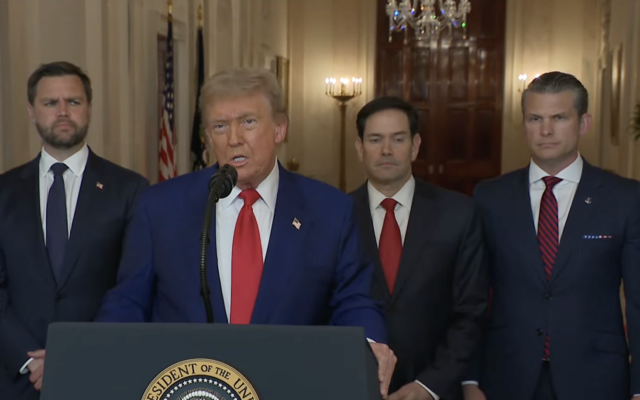
Here’s a look at the sites Trump said the US struck and their importance to Iran’s nuclear program.
Iran’s nuclear facility at Natanz, located some 220 kilometers (135 miles) southeast of Tehran, is the country’s main enrichment site and had already been targeted by Israeli airstrikes. Uranium had been enriched to up to 60% purity at the site — a mildly radioactive level that is a short step away from weapons grade — before Israel destroyed the aboveground part of the facility, according to the UN’s nuclear watchdog, the International Atomic Energy Agency.
Another part of the facility on Iran’s Central Plateau is underground to defend against potential airstrikes. It operates multiple cascades, or groups of centrifuges working together to more quickly enrich uranium. The IAEA has said it believes that most if not all of these centrifuges were destroyed by an Israeli strike that cut off power to the site.
The IAEA said those strikes caused contamination only at the site itself, not the surrounding area.
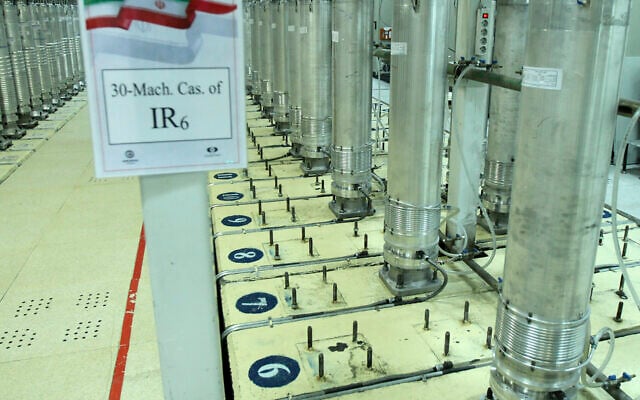
Iran also is burrowing into the Kūh-e Kolang Gaz L�, or Pickax Mountain, which is just beyond Natanz’s southern fencing. Natanz has been targeted by the Stuxnet virus, believed to be an Israeli and American creation, which destroyed Iranian centrifuges. Two separate attacks, attributed to Israel, also have struck the facility.
Iran’s nuclear facility at Fordo is located some 100 kilometers (60 miles) southwest of Tehran. It also hosts centrifuge cascades, but isn’t as big as Natanz. Its construction began at least in 2007, according to the IAEA, although Iran only informed the UN nuclear watchdog about the facility in 2009 after the US and allied Western intelligence agencies became aware of its existence.
Buried under a mountain and protected by anti-aircraft batteries, Fordo appears designed to withstand airstrikes. Military experts have said it could likely only be targeted by “bunker buster� bombs — a term for bombs that are designed to penetrate deep below the surface before exploding — such as the latest GBU-57 A/B Massive Ordnance Penetrator bomb in the American arsenal. The roughly 30,000-pound (13,600-kilogram) precision-guided bomb is designed to attack deeply buried and hardened bunkers and tunnels.
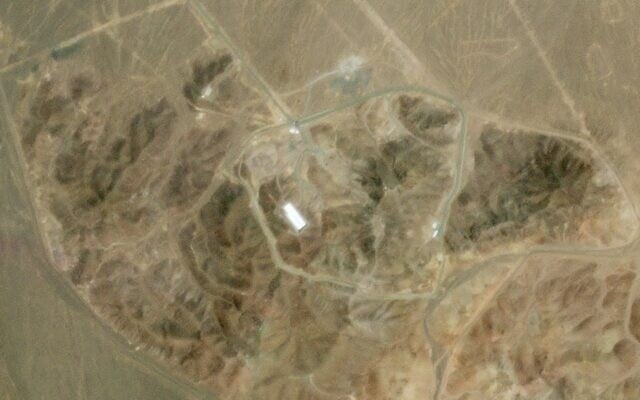
The US has only configured and programmed its B-2 Spirit stealth bomber to deliver that bomb, according to the Air Force. The B-2 is only flown by the US Air Force, and is produced by Northrop Grumman, meaning that Washington would have to be involved in such an operation.
The facility in Isfahan, some 350 kilometers (215 miles) southeast of Tehran, employs thousands of nuclear scientists. It also is home to three Chinese research reactors and laboratories associated with the country’s atomic program.
Israel has struck buildings at the Isfahan nuclear site, among them a uranium conversion facility. The IAEA said there has been no sign of increased radiation at the site.
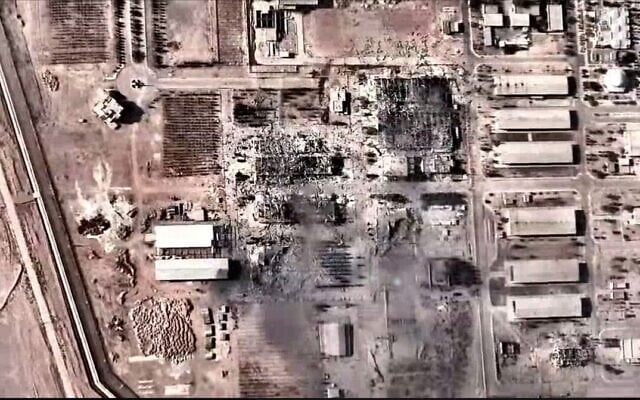
Iran has several other sites in its nuclear program that were not announced as targets in the US strikes.
Iran’s only commercial nuclear power plant is in Bushehr on the Persian Gulf, some 750 kilometers (465 miles) south of Tehran. Iran is building two other reactors like it at the site. Bushehr is fueled by uranium produced in Russia, not Iran, and is monitored by the IAEA.
The Arak heavy water reactor is 250 kilometers (155 miles) southwest of Tehran. Heavy water helps cool nuclear reactors, but it produces plutonium as a byproduct that can potentially be used in nuclear weapons. Iran had agreed under its 2015 nuclear deal with world powers to redesign the facility to relieve proliferation concerns.
